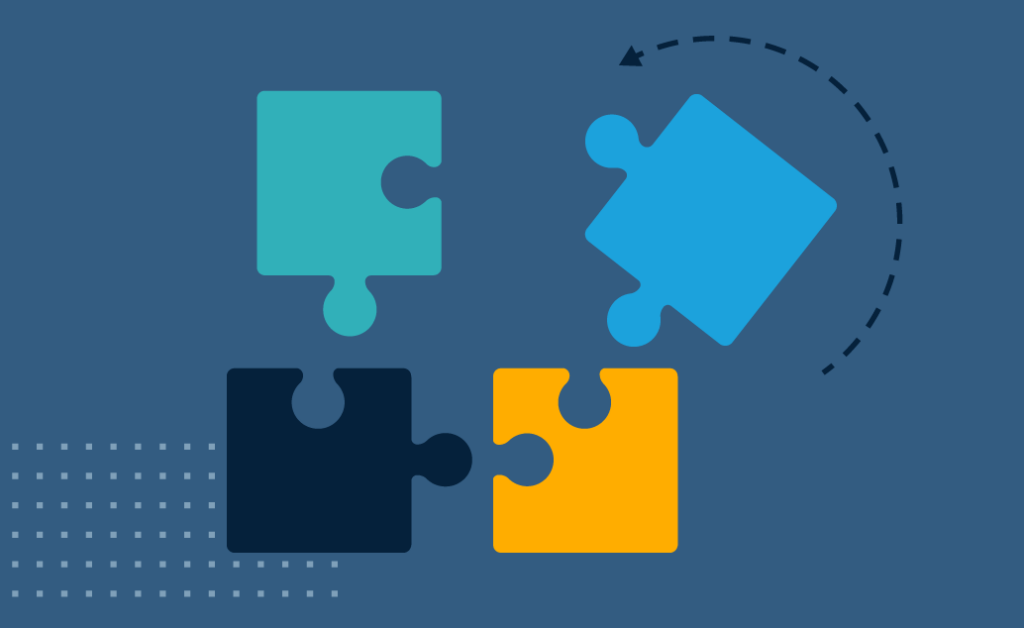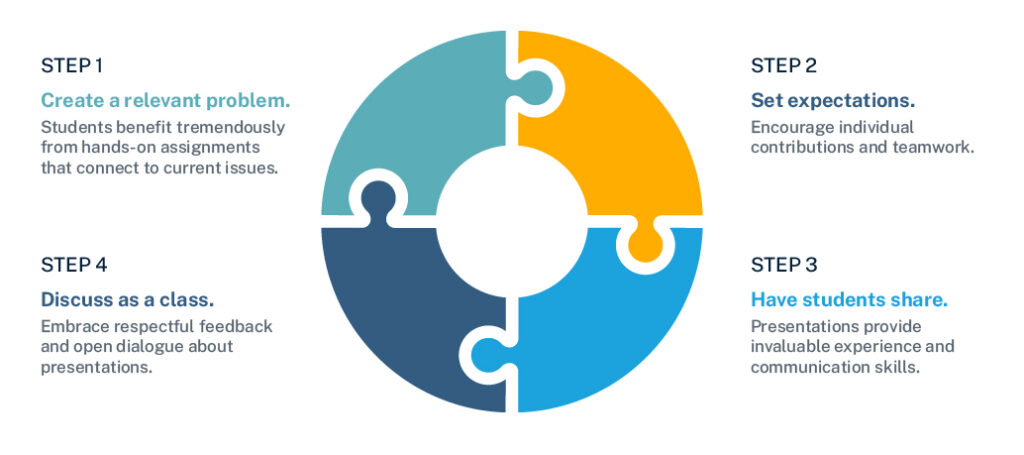
Did you ever play “doctor” as a kid, perhaps coaxing your little sibling to be the patient? You listened to their heart, looked inside their ears and asked questions to figure out what was wrong, even though you knew the issue was that they were just plain annoying.
This childhood example underscores a very powerful learning process called problem-based learning.This active learning process is utilized in a variety of education settings by educators, instructors and professional development leaders across all subject matters and levels to increase engagement, apply learning to real-world experiences and cultivate critical thinking skills.
What is Problem-Based Learning?
Problem-based learning is a student-centered teaching method where students learn about a subject by compiling solutions to an open-ended problem. This form of pedagogy is considered student-centered because it empowers them to identify solutions to real-world problems through self-directed learning. This differs from a traditional approach where an educator might simply share concepts through lecturing. Essentially, students are searching for concepts when identifying solutions to a presented problem and gaining the knowledge and skills needed to problem-solve effectively.
This kind of learning experience is developed using the following generalized steps:
- Describe the learning outcomes to be achieved through the learning experience.
- Create the open-ended problem. Although hypothetical, this should be aligned to real-world experiences, such as medical case studies.
- Provide learners with scaffolds to work through the problem, including but not limited to:
- Research articles
- Question-and-answer sessions with the instructor
- Textbooks covering the material
- Group roles (if completing as a group)
- Establish how the learning will be assessed.
Why Should Educators Use Problem-Based Learning?
- It generates authentic learning experiences. Learners appreciate the chance to connect information they are learning to something they may experience in the workforce.
- It saves time on planning. Once you generate the problem, collect resources and create assessment criteria, most of the work for the lesson is completed. The rest comes in the form of student problem solving.
- It increases engagement. Our brains are stimulated by creative problem solving. Students will automatically join in on the learning experience as they attempt to resolve the cognitive dissonance created by the open-ended problem.
- It gives room for critical thinking and creativity. All too often, learners’ creative juices are squandered by standard lecture-style classes, even though creativity and critical thinking are two invaluable tools students will need in the workforce.
How Can You Integrate Problem-Based Learning in Your Classroom?
To integrate problem-based learning in your classroom, you must adopt a mindset as a problem-based teacher. This means you empower students to take the lead with problem solving by providing an issue to a group or team of students, guiding them to identify what needs to be solved and discussing their learnings and applications for solutions. It requires students to think critically and apply knowledge. These are key tips to keep in mind:
- Create a problem that relates to real-world challenges. Whatever subject you’re teaching is a great place to start. Students benefit tremendously from hands-on assignments that connect to current issues.
- Set and share expectations, rules and guidelines for student teams to keep in mind while seeking a solution. You want to empower individual contributions while encouraging teamwork because both skills will certainly show up when they approach problem solving in life.
- Give student teams the opportunity to share their findings in a presentation. This doesn’t have to be an elaborate slide deck, but presentation projects allow students to grow confidence and observe other team dynamics. Working in groups provides invaluable experience and communication skills.
- Discuss, as a class, the effectiveness of the solutions presented. Open the floor for respectful feedback and open dialogue about whether solutions presented could be reasonably applied in real life. Engaging students in this process develops interpersonal skills.

What Is an Example of Problem-Based Learning?
In a healthcare course, case studies are wonderful tools to maximize student engagement and learning. Here is one example:
Stephanie enters urgent care with debilitating pain and she is afraid it’s going to get worse. As a group, you must carefully formulate five questions to ask her to diagnose the problem and then research proper treatment options with the resources provided to come up with the best care plan for Stephanie.
From this small example, students can work creatively through learned topics in an experiential, engaged format. Even if students do not diagnose the problem correctly, they can still research care options for whichever diagnoses they do make.
By formulating authentic, open-ended problems for students through problem-based learning, instructors will transform their classrooms into a haven of engagement, learning and problem-solving, thus inspiring next generations to take these skills to novel situations in their educational and work-related experiences.
Equip yourself with even more effective instructional strategies by enrolling in an education program at American College of Education. Take a look at our M.Ed. in Instructional Design and Educational Technology or our Certificate in Adult Education and Corporate Training.

